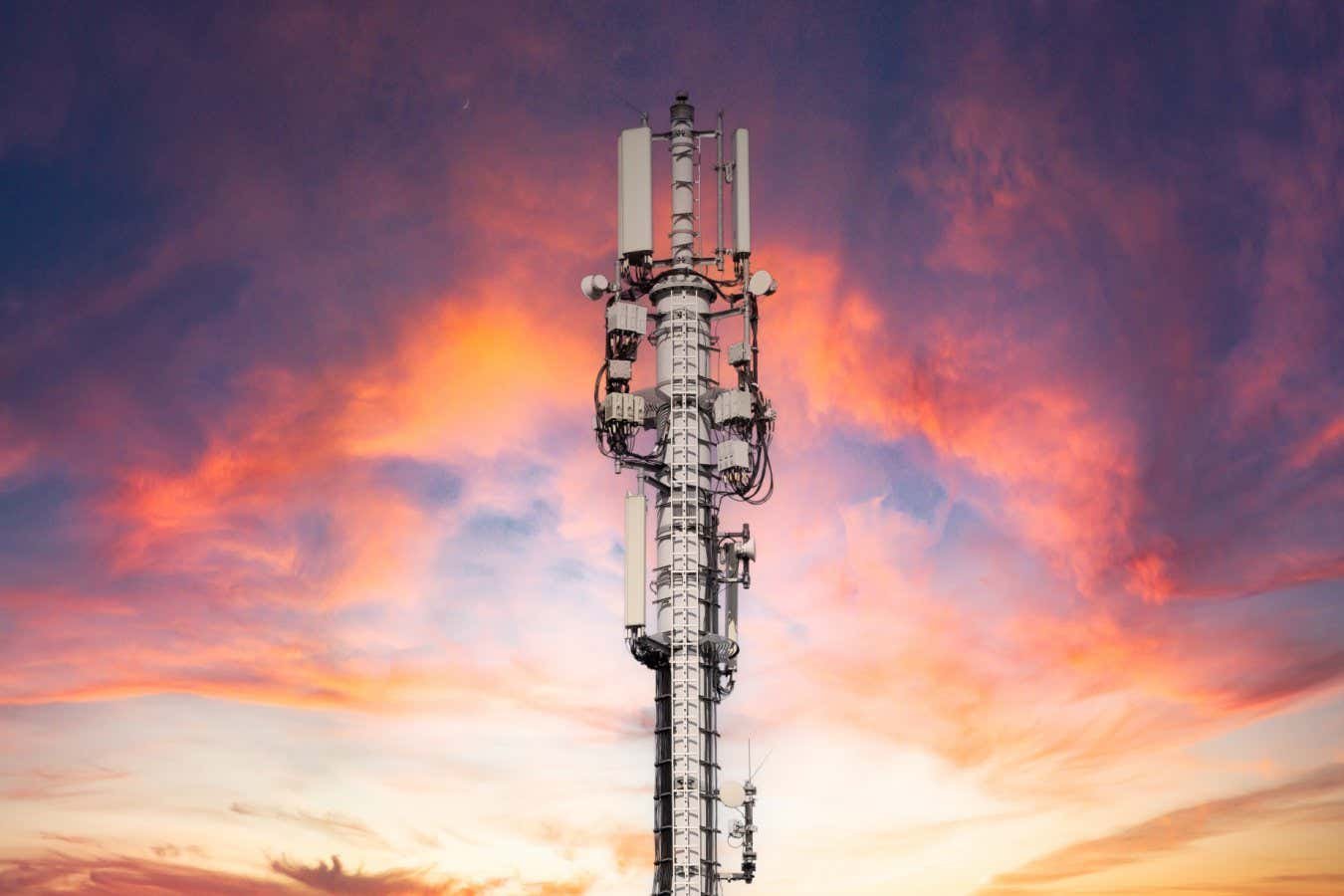
Future mobile networks could transmit data much faster if they use a wider range of frequencies
Frank Herrmann/Getty Images
Wireless data has been sent at 938 gigabits per second, or more than 9000 times the average speed of a current 5G phone connection. This would be the equivalent of downloading more than 20 average-length movies a second. The speed is a record for multiplex data – where two or more signals are mixed.
The weight of demand for wireless signal at large gatherings like concerts and sports games and at busy train stations often causes mobile phone networks to grind to a halt. This is mainly because of the limited bandwidth within which 5G networks operate. The part of the electromagnetic spectrum now allocated to 5G networks varies from country to country, but generally occupies relatively low frequencies below 6 gigahertz, and then only narrow bands of frequencies.
To boost transmission rates, Zhixin Liu at University College London and his colleagues have used a wider range of frequencies than in any previous experiment of its sort: all the way from 5 gigahertz to 150 gigahertz, using radio waves and light.
Liu says digital-to-analogue converters are currently used to send zeros and ones through the air in radio waves, but they struggle at higher frequencies. So his team used that technology for the lower portion of the range and a different technique involving lasers at the higher end, combining both to create a wide band of data that can be picked up by hardware that could be integrated into next-generation smartphones.
This allowed the team to send data through the air at 938 Gb/s, more than 9000 times as fast as the average UK 5G download speed. This could allow individuals to benefit from vast data rates, for applications that may not even have been conceived yet, or ensure that large groups of people can maintain enough bandwidth to stream video.
Although this is a record for multiplex data, single signals have been sent faster, exceeding 1 terabit per second.
Splitting the signals across wide frequency ranges is like taking the “narrow, congested road” of current 5G networks and turning it into “10 carriage motorways”, says Liu. “Just like with traffic, you need wider roads to carry more cars.”
Liu says his group is in talks with smartphone-makers and network operators, and that he hopes future 6G technology will be based on this work, but that other approaches under development are also vying for position.
Topics:

Felecia Phillips Ollie DD (h.c.) is the inspiring leader and founder of The Equality Network LLC (TEN). With a background in coaching, travel, and a career in news, Felecia brings a unique perspective to promoting diversity and inclusion. Holding a Bachelor’s Degree in English/Communications, she is passionate about creating a more inclusive future. From graduating from Mississippi Valley State University to leading initiatives like the Washington State Department of Ecology’s Equal Employment Opportunity Program, Felecia is dedicated to making a positive impact. Join her journey on our blog as she shares insights and leads the charge for equity through The Equality Network.




